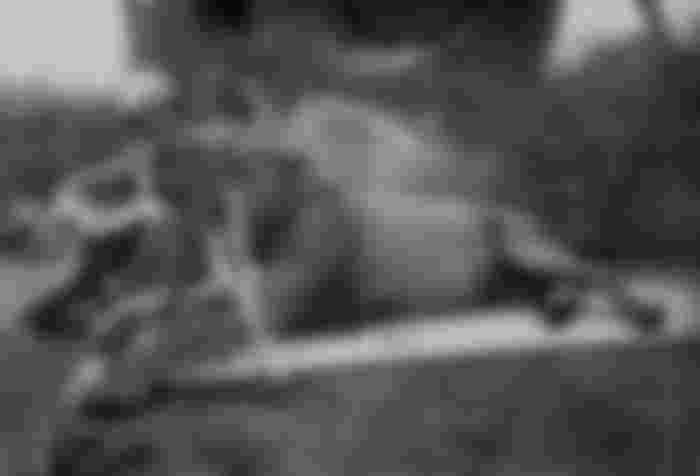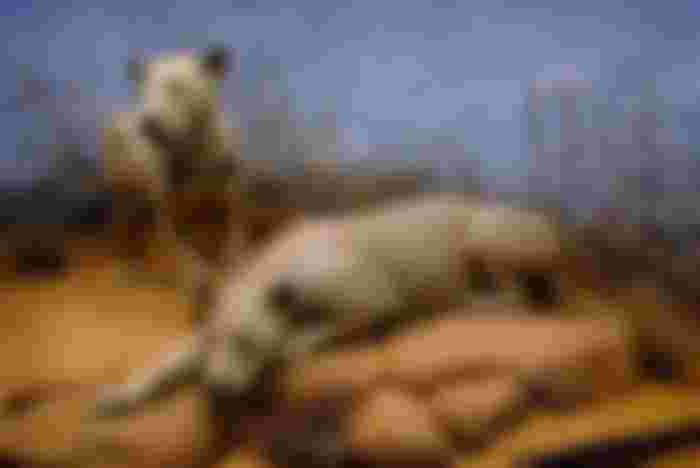Introduction
Uganda has a healthy overlap with nature that witnessed humans and animals coexisting for centuries. Such is the natural beauty that wildlife tourism is one of the growing industries in Uganda. However, the so-called man-animal conflict does happen, and over the years, the way to mitigate them has been formulated. Not all conflicts are fatal, but then there are those once-in-a-century bone-chilling encounters that live through generations for their brutality.

There was one such conflict back in the late 1800s when man-animal conflict took a fatal turn for not one or two humans but a multitude of them. This is the story of the Tsavo lions, as they came to be known, wreaking havoc on the workers at a construction site. The story is so famous that even movies were made on the lions. Six different movies were made, with the popular one being “The Ghost and the Darkness” in 1996.
Let’s get to know the story of the Tsavo Lions.

Tryst With Death | Tsavo | 1898
The story goes that the British were planning the construction of the Kenya-Uganda railways, for which they got workers and got them camped around the site. Most of these workers were Indians, as the British ruled India in 1898. Much of the history points to the deaths of these workers between March to December 1898.
It initially started with intermittent attacks on the workers by lions, which had not ventured around the human camps until then. But as days went, either due to lack of prey or the taste of human blood, these lions frequently attacked the workers. It was never an attack with no consequences. Always lives were lost. This scared the workers so much that they refused to live at the site, and therefore, the work stopped.
The British tried to stop this menace, and that is how Lieutenant – Colonel John Henry Patterson, who was heading the construction, got ready for the encounter. During the phase, they learned that the lions were maneless and had grown fearless in approaching the campsite over the course of the attacks. Most of the attacks happened in the night when these lions would drag their victims sleeping in tents.
Nothing seemed to stop the lions. Barbwires, fences, fires, and other conventional means were tried to stop them from entering the site, but the lions found a way in. They used to jump over the impediments or crawl underneath them. Either way, it was next to impossible to stop them. They seemed to figure out how to escape without being killed. Those lions had turned into intelligent killing machines.

Turning the Tables | Killing the Man-Eaters
By the time traps were laid to lure and kill the lions, they had killed about 135 men, as per estimates. The exact numbers were never arrived at, but the estimates remained between 88 to 135. Either way, that was a lot of people killed by the lions in nine months. Besides, the lion pair had grown confident about their prey. Earlier it used to be one lion entering the campsite to drag and kill men, while the other stayed out. In the later months of 1898, both lions entered the site simultaneously and dragged away one man each every time they attacked. The workers were sitting ducks.
As the team under Patterson laid traps to get the lions, they proved difficult to track. That was until Patterson finally got a shot at one of the lions. Unfortunately, the bullet hit the lion on its hind leg, and it managed to escape. Lions and other carnivores like Tigers are said to be able to track their attackers and effect revenge. That’s exactly what the lion did as it came back the same night stalking Patterson. However, with a stronger rifle, Patterson took the second shot, which hit the lion at the shoulder and was said to have pierced its heart. Though the lion escaped, it was found dead the next morning close to the spot. That was 9th December 1898. A full nine months since the attacks started. Here’s the picture of the first lion which was killed.

The lion was later identified as FMNH 23970. That's Patterson in the background.
The work wasn’t over yet as the second lion was still at large. In fact, this was the one that proved the most difficult to kill. The second lion was shot nine times over different days and three different rifles to finally put it to rest. It was as if it had a point to prove before giving up. In fact, Patterson had stated back then that the lion tried its best to get to him and died gnawing at a branch still trying to approach him. That was a difficult one to kill!

The second lion was named FMNH 23969 and was killed on 20th December 1989. That was eleven days after the first lion perished. With that, the night terror at the campsite finally came to an end.

What Happened of The Lions?
Patterson used the two lion skins as floor rugs which remained with him for twenty-five years. He ended up selling the skins to the Field Museum of Natural History in 1924. As it wasn’t really looked after, the skins were not in the best of forms. It was cleaned, and the lions were reconstructed with their original skull.
They are now a permanent display at the Museum, and here is a photo of the same.

The standing lion is the one killed on 9th December 1898, also known as FMNH 23970. The crouched one was the one that did not want to die – FMNH 23969.

Later Studies and Movies
As I had mentioned before, there were movies made on the lions, and of course, the storyline was dramatized a bit. For example, in the 1996 movie, The Ghost and the Darkness, the lions are shown as full maned ones, whereas the original ones were maneless.
Also, the number of deaths that had occurred was always disputed, with the numbers ranging from 88 to 135. But even those numbers were disputed based on research in 2001, which claimed that the real numbers could have been closer to 30 odd humans. However, arguments were favoring both numbers as much as against each other. So, that will remain a mystery. At least, it was known that 135 men went missing, if not eaten by the lions.
Another study in 2017 also mentioned that the lions could have turned man-eaters because of a severely damaged tooth. Also, the second lion’s skull showed an infection at the root of one of the canines. So, these could have been one of the reasons for turning man-eaters. There were also claims that they would not have necessarily been man-eaters as much as killing for the sake of killing. The latter behavior has been observed in other carnivores too.
So that’s the legacy of the dreaded Tsavo Lions. For those interested, you’ll can visit the museum to stare at history in the eyes! Dreaded history, if I may!
-------------******-----------------
Image Courtesy: [OpenClipart-Vectors](https://pixabay.com/images/id-153648/) at Pixabay | Wikimedia Commons
-------------******-----------------
Some Useful Sites to Give You More
Some of the good crypto-writing-earning sites:
Publish0x: Earn ETH || Read.cash: Earn BCH || Torum: Earn XTM || Tipestry: Earn Dogecoin || Trodl
----------------------
Some crypto-faucets and jewelry earners:
Horizen: Earn ZEN|| Mene: Earn $5 on signup || Earn Litecoin || Earn Bitcoin || Pipeflare: Earn ZEC, FLR, DOGE
----------------------
Few Gaming-cum-earning sites
Splinterlands || Drugwars || Holybread
----------------------
Spot and/or Futures Trading Exchange
----------------------
Search Tool That Pays in Crypto





